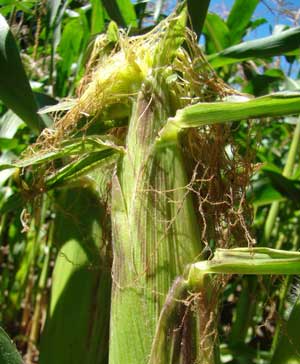
Grain is the closest thing to an industrial commodity: storable, portable, fungible, ever the same today as it was yesterday and will be tomorrow. Since it can be accumulated and traded, grain is a form of wealth. It is a weapon, too…; the nations with the biggest surpluses of grain have always exerted power over the ones in short supply. Throughout history governments have encouraged their farmers to grow more than enough grain, to protect against famine, to free up labor for other purposes, to improve the trade balance, and generally to augment their own power. *
Note: wheat prices on the global market have doubled in the last year.
Implications? Yes, the modern global economy pivots on more than food, but food prices, especially of the underpinning of the modern diet—grain, as Pollan repeatedly notes—have substantive implications, including of sociopolitical instablity.
Archaeologically, evidence of food storage takes myriad forms: below-ground pits, pots and baskets and other containers…. Of special interest: where those were located—out in public view or hidden in a domestic structure….
* From Michael Pollan’s The Omnivore’s Dilemma: A Natural History of Four Meals (2006; now available in paperback!), page 201. Read Pollan’s page here, and the NYT review here.